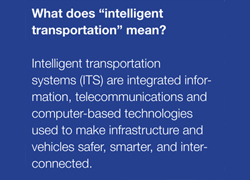IMDEA Networks

Archives: Events
On Economic Heavy Hitters: Shapley value analysis of 95th percentile pricing
Rade Stanojevic obtained his B.Sc. in Mathematics from University of Nis, Serbia and a Ph.D. from Hamilton Institute, NUIM, Ireland. His current research interests span performance evaluation, network economics and energy aware computing. His work on decentralized cloud control has been awarded the ACM SIGMETRICS 2008 Kenneth C. Sevcik Outstanding Student Paper Award and the IEEE IWQoS 2009 Best Paper Award. Since fall 2010 he is a staff researcher in the IMDEA Networks Institute, Madrid. Prior to that he was a post-doc with Telefonica Research, Barcelona.
Read more arrow_right_altVivisecting the YouTube Video Delivery Cloud: Overall Architecture and Key Mechanisms
Since its inception in 2005, YouTube has seen explosive growth in its popularity; today it is indisputably the world’s largest video sharing site. Given the number of viewers and the accompanying traffic volume, its geographical span and scale of operations, the design of YouTube’s content delivery infrastructure is a highly challenging engineering task.
Read more arrow_right_altPeer-to-peer Session Initiation Protocol (P2PSIP)
This talk will introduce P2PSIP (Peer-to-peer Session Initiation Protocol) technologies, including the most common protocols and algorithms. The talk will also discuss the performance of these technologies in different network settings and the tradeoffs associated with deploying P2PSIP systems. Additionally, the talk will cover issues related to security and NAT traversal.
Read more arrow_right_alt
Content-Centric Networking: challenges and (possible) solutions
Content-Centric Networking (CCN) is a clean-slate proposal to replace/enrich the current Internet. CCN is focused on content instead of machines, so users can request a given content by sending Interest messages with the name of the content. CCN routers have three main data structures: a FIB mapping content names to outbound faces, a Content Store to cache data packets and a pending Interest table (PIT) to forward incoming packets towards the consumers, using a breadcrumb mechanism. Security is part of the proposal, as all data packets are signed by its publisher.
Read more arrow_right_altCAESAR: Carrier Sense-Based Ranging in Off-The-Shelf 802.11 Wireless LAN
802.11 wireless local area networks have been designed for wireless communication. The principle for 802.11 communication is that frames are acknowledged (ACKed) after a short and predefined MAC idle time. Despite the MAC idle time is designed to be constant, we find that it varies with i) the physical distance between stations, caused by the delay of wireless signal propagation, and ii) the time to detect the ACK at the local station, which varies with the signal strength of the incoming ACK. Exploiting this knowledge, we present CAESAR, CArriEr Sense-bAsed Ranging, that combines time-of-flight and signal-to-noise ratio measurements to calculate the distance between two stations. CAESAR measures the distance by estimating the MAC idle time in a data/ACK communication at a 44 MHz clock resolution and the ACK detection time on a per-frame basis. CAESAR is a software-based solution that is entirely implemented at the transmitter and it requires no 802.11 protocol modifications. We implement CAESAR on commodity hardware and conduct extensive experiments both in controlled network conditions and dynamic radio environments. Our measurements confirm the accuracy of the solution and show the capability to track the distance to WLAN smartphones at pedestrian speeds.
The work above has been conducted at Disney Research and published at ACM Conext'11.
The last part of the talk will briefly present ongoing research activities conducted at ETHZ in the area of time-of-flight WLAN localization.
Read more arrow_right_altDeepDive: Transparently Identifying and Managing Performance Interference in Virtualized Environments
We describe the design and implementation of DeepDive, a system for transparently identifying and managing performance interference between virtual machines (VMs) co-located on the same physical machine in Infrastructure-as-a-Service cloud environments.
DeepDive successfully addresses several important challenges, including the lack of performance information from applications, and the large overhead of detailed interference analysis. We first show that it is possible to use easily-obtainable, low-level metrics to clearly discern when interference is occurring and what resource is causing it. Next, using realistic workloads, we show that DeepDive quickly learns about interference across co-located VMs. Finally, we show DeepDive’s ability to deal efficiently with interference when it is detected, by using a low-overhead approach to identifying a VM placement that alleviates interference.
Read more arrow_right_altHas the Internet delay gotten better or worse?
Delay is a key Internet performance metric and its stability, variation, and abrupt changes have been well studied.
However, little could have been said about the Internet-wide delay distribution. In order to build a representative sample set for the Internet-wide delay distribution, one needs to draw data from a random selection of source hosts to destination hosts and there is no measurement system with access to every AS and subnet of the Internet. In this work we propose to apply the path-stitching algorithm to archival measurement data and reconstruct the past history of Internet delay distribution. The two main advantages of path stitching are that data from existing measurement projects is sufficient to provide accurate estimates and it produces delay estimates between almost any two hosts in the Internet.
From intelligent transportation to smart grid. In quest of the killer application for multiagent system technology
Since the early nineties, intelligent agents and multiagent systems have been envisioned as the key enabling technologies for the design and implementation of large-scale, open, distributed systems. After two decades, the scientific community is still in quest of the killer application that could unleash the full potential of multiagent systems. In recent years, smart infrastructures, such as intelligent transportation and smart power networks, attracted the interest of the scientific community as two paradigmatic large-scale, open, distributed systems of a great social and economical relevance. In particular the talk will focus on two examples of on-going research on the application of market-based methods for the efficient allocation of urban road networks and coalition formation for the creation of virtual power plants.
Read more arrow_right_altModeling Systems from Logs of their Behavior
Logged messages are invaluable for debugging and diagnosing problems. Unfortunately, many execution logs are inscrutable in their raw form. For example, a production Google system may generate a billion-line log file in a single day. In my talk, I will detail two log-analysis tools that I developed to deal with this problem. These tools infer concise and precise models from large execution logs of sequential and distributed systems. Both tools enable new kinds of program analyses and make logs more useful to developers.
Read more arrow_right_altVehicular Networks for Intelligent Transportation Systems: Overview of the Research activities of the "Grupo de Redes de Computadores (GRC)", Universitat Politècnica de València
Wireless communication for intelligent transportation systems (ITSs) is a promising technology to improve driving safety, reduce traffic congestion and support information services in vehicles. A new era of vehicular networks that include vehicle-to-vehicle (V2V) and vehicle-to-infrastructure (V2I) communications is approaching.
Read more arrow_right_alt











Recent Comments